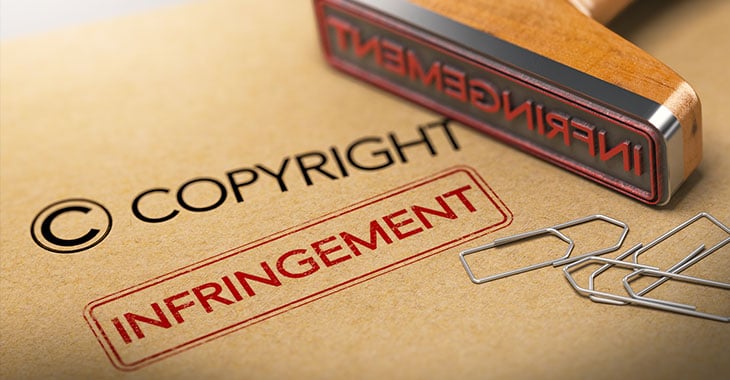
Cyprus has always been an attractive location for business activities. Intellectual Property can be one of the most valuable assets of an organization and it is a significant strategic business decision to select the appropriate location for the establishment and management of IP holding companies. The country offers a beneficial tax rate and is also legally supported by the EU Member States and the signatories of all major IP treaties and protocols.
The Intellectual Property (IP) Box regime, otherwise known as Patent Box or Innovation Box, is a very low corporate tax regime, implemented by several countries to encourage research and development activities, which result in lower taxes, by taxing revenues deriving from a license, sublicense, sale or transfer of qualified IP assets. This method is very different compared to other commercial revenues, and much more beneficial.
Throughout the years, all the necessary changes in legislation have been made for the country to align with the European standards on Intellectual Property assets. Cyprus has a sound legal system based on common law principles. The new Cyprus IP Box regime guarantees maximum protection and certainty for IP owners.
The term ‘Intellectual Property’ includes any mind creations, such as software programs, innovative algorithms and formulas, inventions, trade secrets and know-how, manufacturing practices, marketing concepts, artistic works, designs, images, names and inventions used in commerce. IP assets can be easily and conveniently relocated or transferred between different jurisdictions and tax systems due to their non-physical character. Such transfers can also occur with no significant costs. In fact, 85% of multinational companies use this flexibility to reduce overall taxes by allocating valuable IP to companies in countries with advanced IP box regime.
There are two types of the IP Box Regime used worldwide:
- Reduced rates of taxes on qualifying income (implemented by France, Netherlands, and the UK)
- An exemption of a specified proportion of revenues (implemented by Spain, Luxembourg, Belgium, Hungary and Cyprus)

Historical Development Of The IP Box Regime
During the 1970s, Ireland introduced section 34 of the 1973 Finance Act in its Corporation Tax, which allowed tax relief in respect of royalties and other income from licenses patented in Ireland. Even though this section was withdrawn later in 2010 under the National Recovery Plan 2011-2015 of the Republic of Ireland , it nevertheless gave the first incentive to total tax relief for an income of such nature.
In 2001, France adopted Ireland’s example in reducing the rate of tax of revenues gained from IP licensing or the transfer of qualified IP. Later, the IP box became a trend for other European countries as well, such as Belgium, Hungary, Luxembourg, Netherlands, Spain, United Kingdom, Switzerland and Cyprus.
Our team of Cyprus lawyers and English lawyers is able to assist you and your company by drawing up an intellectual property strategy which recognizes the very important position that such assets hold in the success of your business. Contact us for details.
Cyprus Old IP Box Regime
The Cyprus old IP Box regime was introduced in 2012 and can still apply, in several cases, until 30/06/2021.
It covers the intellectual property assets in accordance with
(i) the Patents Law,
(ii) the Trade Marks Law and
(iii) the Intellectual Property Rights Law.
Benefits of the Cyprus IP Box Regime
- 80% deduction of profits on disposal of IP rights (a generous exemption compared to other regimes)
- 80% (four-fifths) deduction of revenue from the exploitation of IP rights – so only 20% of IP income after the deduction of the costs of earning the income is taken into calculation. [e.g. when applying the Cyprus corporate tax rate of 12.5% which is amongst the lowest in the EU, provides the effective tax rates of 2.5%]
- 5-year amortization period – capital expenditure related to IP acquisition of development may be deducted in the first tax year in which the expense was incurred as well as in the subsequent 4 years. This in practice can lower the effective tax rate to less than 2%.
The introduction of the new rules regarding the taxation on Intellectual Property assets demonstrated the readiness of Cyprus in the IP industry, which levels with the European standards.
The New Cyprus IP Box Regime
In 2016, the House of Representatives in Cyprus ratified amendments to the Income Tax Laws to bring the national legislation on the taxation of income from Intellectual Property assets in alignment with the provisions of the OECD BEPS Action 5 and the new EU rules. The new provisions apply for IP assets which are developed after the 1st of July 2016.
New Definitions:
A qualifying intangible asset
A qualifying intangible asset is an intellectual property asset which was acquired, developed or exploited by a person in furtherance of his business, (excluding such property associated with marketing) and which is the result of research and development activities and includes intangible assets for which only economic ownership exists.
Those assets are patents as defined in the Patents Law, computer software, other IP assets which are legally protected, and they fall under one of the following:
- utility models, intellectual property assets which provide protection to plants and genetic material, orphan drug designations and extensions of protections for patents; or
- nonobvious, useful, and novel, where the person which utilizes them in furtherance of a business does not generate annual gross revenues exceeding €7.500.000 (in case of a group of companies not exceeding €50.000.000), which are certified as such by an Appropriate Authority in Cyprus or abroad.
Business names (including brands), trademarks, image rights and other intellectual property rights used to market products and services are not considered as qualifying intangible assets anymore.
Qualifying expenditure
Qualifying expenditure is the sum of total research and development costs incurred in any tax year, wholly and exclusively for the development, improvement or creation of qualifying intangible assets and which costs are directly related to the qualifying intangible assets. It includes, but is not limited to, wages and salaries, direct costs, general expenses relating to installations used for research and development activities, costs associated with research and development that has been outsourced to non-related persons
However, the term does not include cost for the acquisition of intangible assets, interest paid or payable, costs relating to the acquisition or construction of any immovable property, amounts paid or payable directly or indirectly to a related person to conduct research and development activities, regardless of whether these amounts relate to cost-sharing agreements and costs which cannot be proved directly connected to a specific eligible intangible asset.
Up-lifting expenditure
Up-lifting expenditure will be added to the above costs, which means the lower of:
- 30% of the eligible costs, or
- the total amount of the cost of acquisition and outsourcing to related parties for research and development in relation to the eligible intangible asset.

Qualifying income
Qualifying income is the proportion of the overall income corresponding to the fraction of the qualifying expenditure, plus the uplifting expenditure over the total expenditure incurred for the qualifying intangible asset.
Overall expenditure
Overall expenditure is the total capital expenditure, qualifying or not, relating to the creation of the IP.
Overall income
Overall income is the gross income in a tax year less the direct costs incurred to produce the income. Income includes, but is not limited to:
- royalties or other amounts in connection with the use of qualifying intangible assets
- any amount for a license for the operation of qualifying intangible assets
- any amount received from insurance or as compensation in relation to the qualifying intangible asset
- capital gains and other income from the sale of qualifying intangible assets
- the embedded income of qualifying intangible asset arising from the sale of products by using procedures that are directly related to this item
Direct costs
Direct costs include:
- all direct and indirect costs incurred in earning the income from the qualifying intangible assets
- the amortization of the cost of the intangible assets
- notional interest on equity contributed to financing the development of the qualifying intangible asset
The owners of IP assets are required to keep proper books of account and records of income and expenses, in order to be able to claim a benefit for each intangible asset under the new regime.
Transitional provisions are in force for persons who have registered their IP assets before the implementation of the new IP Box regime, enabling them to continue benefiting from the old IP Box Regime until 30 June 2021. Such provisions apply to IP assets which:
- were acquired before 2 January 2016; or
- were acquired directly or indirectly from a related person during the period from 2 January 2016 until 30 June 2016, and which IP assets at the time of their acquisition were benefiting under the IP Box regime or under a similar scheme for intellectual property assets in another state; or
- were acquired from an unrelated person or developed during the period from 2 January 2016 until 30 June 2016.
The introduction of the new rules regarding the taxation on Intellectual Property assets demonstrated the readiness of Cyprus in the IP industry, which levels with the European standards. Implementing the new IP Box regime is expected to stimulate the growth driving sectors of IP exploitation, as well as research and development.
If you wish to learn more about Cyprus IP BOX contact us at info@chambers.law



